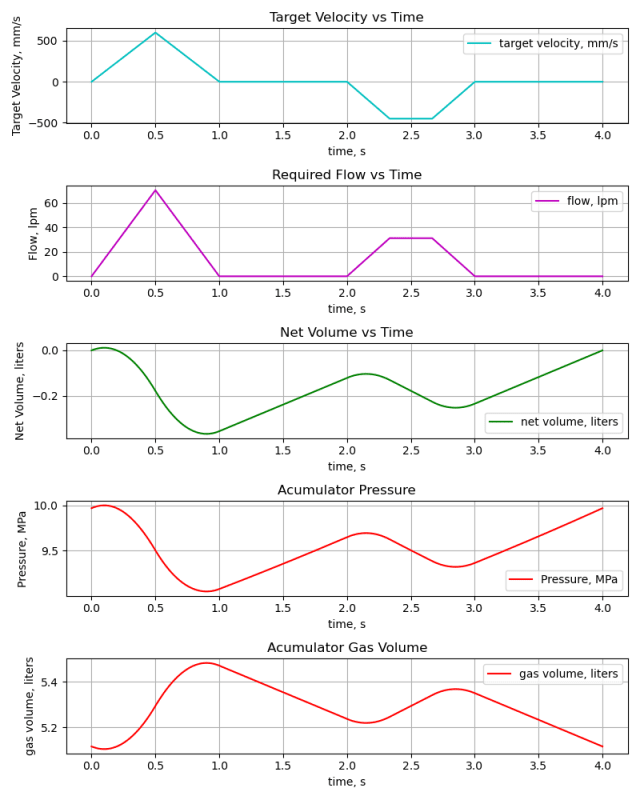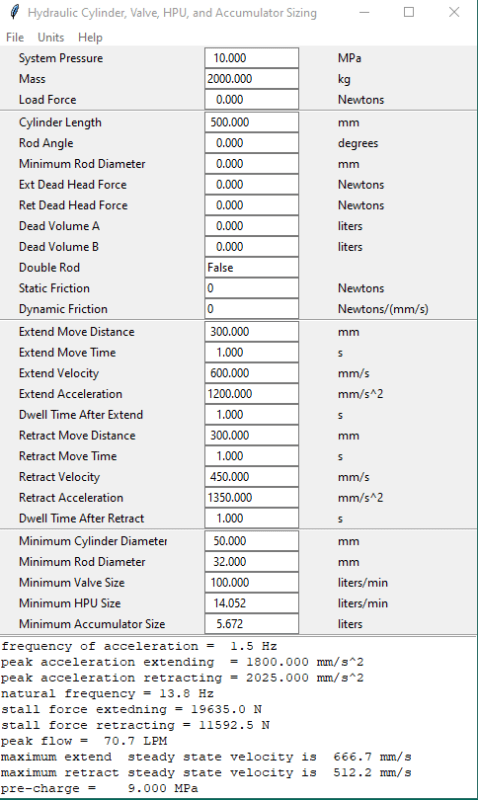It does not matter if the cylinder is extending or retracting, all that matters to the accumulator is the volume that is needed to move the cylinder to its full travel.
If the cylinder needs 100 BAR minimum (P2), the pre charge (P1) will be 90 BAR.
The maximum pressure in the accumulator (P3) will be a function of the volume of gas that is stored.
If you start with 90 BAR gas pressure and fill the accumulator with oil to the lowest oil pressure = 100 BAR, the gas volume will go down, but it's not possible to know what the new volume is until you select the accumulator volume.
If the maximum pressure is 200 BAR, the pressure ratio is 2:1 and Boyle's law tells us that in isothermal conditions, halving the volume of the gas will double the pressure.
P1 = 90 BAR
P2 = 100 BAR
P3 = Max Pressure ?
V1 = Gas Volume ?
V2 = Pre Charge volume ?
V3 = Compressed gas volume?
When you know how much oil needs to flow from the accumulator to the cylinder, you can calculate V3-V2. When you know this you can work out how much gas is required to go between P2 and P3.
The max pressure might be set by the volume of gas you can store, or it might be set by the system limits.
Example:
A cylinder needs to have minimum pressure of 100 BAR
The pre charge will be 90% of the minimum pressure to make sure that there is always some compression to push the oil out of the accumulator.
Let's say that the max pressure of the system is 210 BAR.
Let's also say that the cylinder will require 450cc to move full stroke.
P2 x V2 = P3 x V3
We want to know what volume of gas is required to ensure that the pressure is not more than 210 BAR, when the difference between V2 and V3 is 450cc.
P3/P2 = V3/V2
210/100 = 2.1 Therefore the volume ratio is also 2.1 : 1
Your gas volume needs to be 450cc x 2.1 to work between 100 and 210 BAR.
You need 945cc of gas volume differential to achieve these pressures.
However, the gas will also expand as it's compressed and contract as it decompresses. Therefore, the polytropic constant for nitrogen needs to be added to the equation.
With adiabatic compression and decompression the pre-charge volume will need to be 1500cc.
If you can live with higher max pressure, like 300 BAR, you can cope with less gas volume and you would need 1260cc.
Accumulator volumes are standardised to 1, 2, 4 and 10 Litres. You would need to use a 2 litre accumulator in this case.
If you can make space for a 4 litre accumulator, the max pressure will come down to 122 BAR.
If you use a 10 Litre accumulator, the max pressure will be 108 BAR.
Really, the max pressure is function of the gas volume that you can store.


